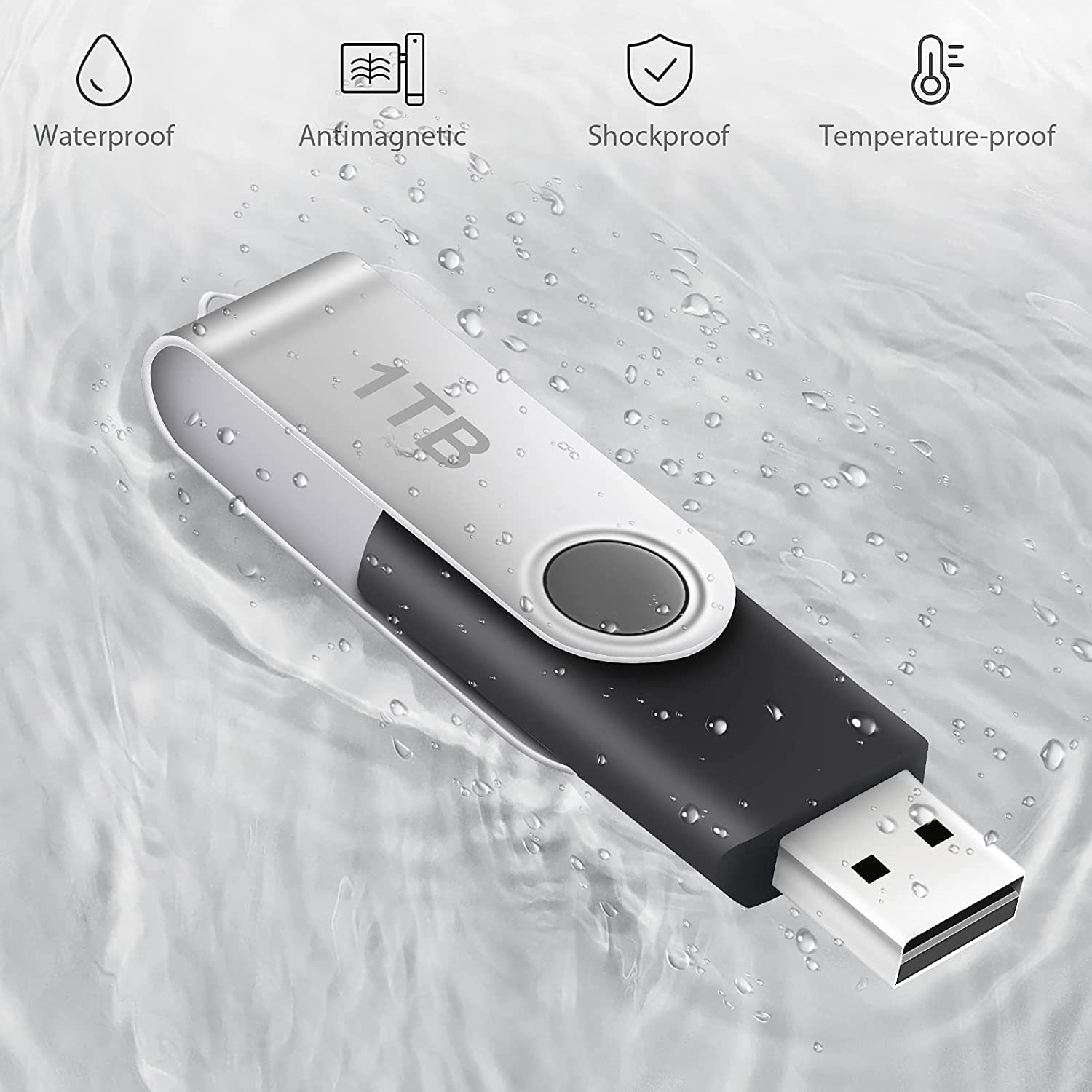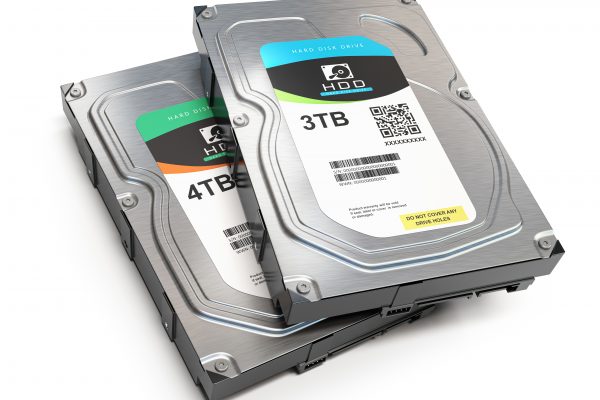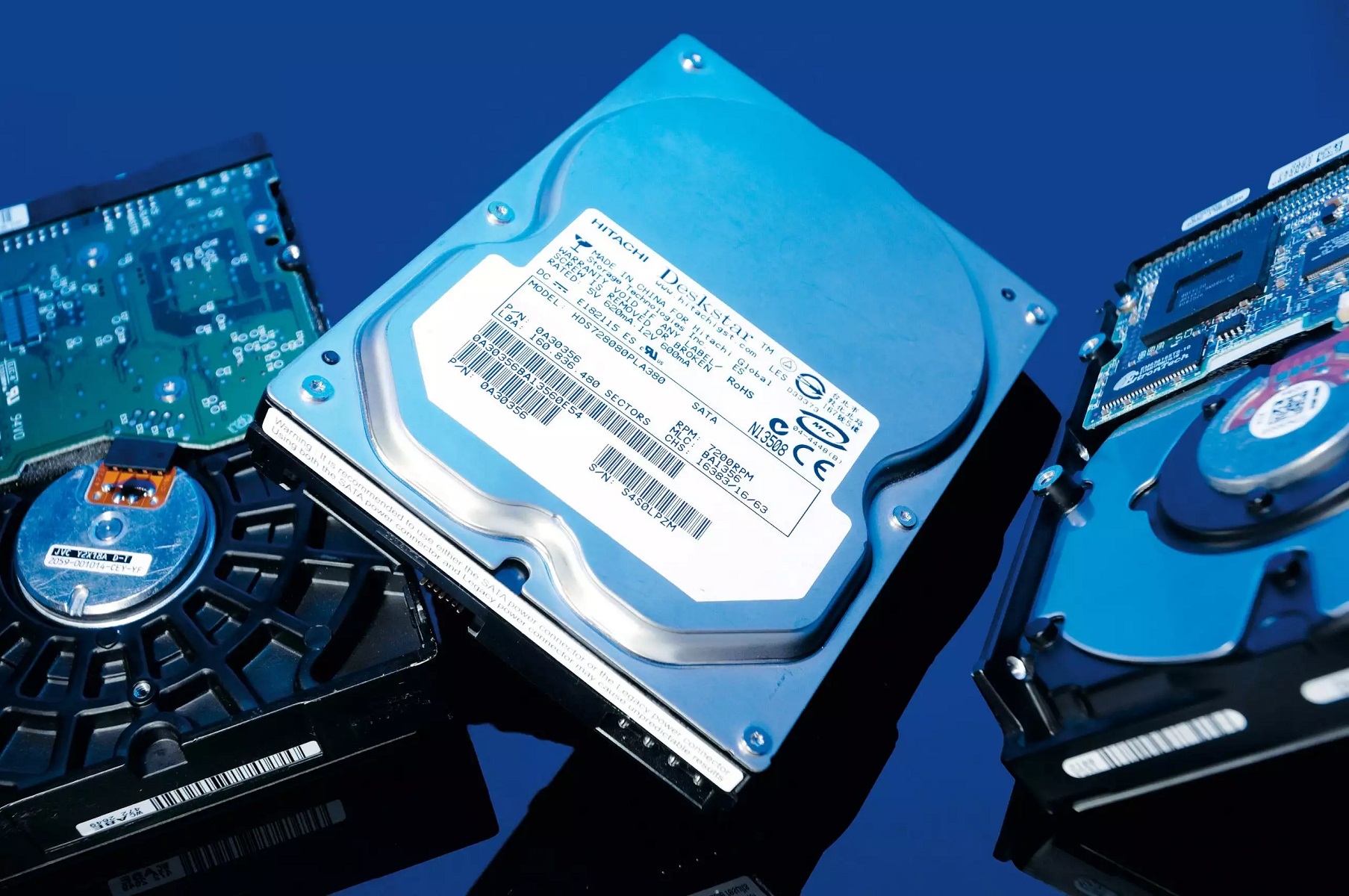

Articles
What Is A Tb Storage
Modified: January 21, 2024
Learn more about the importance of data storage and how it relates to TB storage technology. Discover the benefits and features of efficient data storage solutions.
(Many of the links in this article redirect to a specific reviewed product. Your purchase of these products through affiliate links helps to generate commission for Storables.com, at no extra cost. Learn more)
Introduction
In today’s digital age, data storage is becoming increasingly important. With the exponential growth of information generated by individuals, businesses, and organizations, the need for reliable and scalable storage solutions is paramount. One such solution that has gained significant attention in recent years is TB (Terabyte) storage.
TB storage refers to the capacity to store and manage vast amounts of data in the range of terabytes, which equates to one trillion bytes of digital information. This level of storage capacity has revolutionized the way data is stored, offering tremendous benefits and opportunities in various domains.
In this article, we will explore the definition of TB storage, its benefits, applications, challenges, and how it compares to other storage options. We’ll also discuss the factors to consider when choosing the right TB storage solution and explore future trends in TB storage technology.
So, whether you’re a tech enthusiast, business owner, or someone curious about data storage advancements, let’s dive into the world of TB storage and discover its endless possibilities.
Key Takeaways:
- TB storage offers high capacity, scalability, and improved performance, making it indispensable for businesses and individuals dealing with massive amounts of digital data. Its applications span across industries, from media and research to e-commerce and cloud storage.
- Future trends in TB storage technology include increased storage density, integration of solid-state drives, dominance of cloud-based storage, and a heightened focus on data security. These advancements will shape the way we store and manage large-scale data in the digital era.
Read more: How Much Is 1 Tb Of Storage
Definition of TB Storage
TB storage, short for Terabyte storage, refers to the capability of storing massive amounts of data. A terabyte is a unit of digital information that equals approximately one trillion bytes, or 1,000 gigabytes. With TB storage, individuals and organizations can store and manage vast quantities of data, ranging from documents and images to videos and databases.
One terabyte is equivalent to 1,024 gigabytes or 1,073,741,824 kilobytes, providing ample space for storing extensive digital content. The evolution of TB storage has opened up new possibilities for businesses and individuals alike, enabling them to store and access data with unprecedented ease and convenience.
Traditionally, data storage options were limited to smaller capacities, such as megabytes (MB) and gigabytes (GB). However, as the volume of data generated continues to grow exponentially, the need for larger storage capacities has become crucial. TB storage bridges the gap, allowing for the storage and preservation of massive datasets that were previously inconceivable.
Whether it’s personal data, business records, scientific research, or multimedia content, TB storage provides the infrastructure needed to store, organize, and retrieve vast amounts of information quickly and efficiently. From cloud-based storage solutions to physical hard drives, the options for utilizing TB storage are diverse, offering flexibility and scalability to accommodate the ever-increasing data storage demands of our digital world.
In the next sections, we will explore the benefits, applications, and challenges associated with TB storage, shedding light on its significance and impact in various domains.
Benefits of TB Storage
TB storage offers several significant benefits that enhance data management and storage capabilities. Here are some key advantages:
1. High Capacity: One of the primary benefits of TB storage is its massive capacity. With terabytes of storage space, individuals and organizations can store vast amounts of data without worrying about running out of storage.
2. Scalability: TB storage solutions are highly scalable, allowing users to expand their storage capacity as their data needs grow. This scalability ensures that you can easily accommodate the increasing volume of data generated over time.
3. Improved Performance: TB storage devices often come with advanced features that enhance data transfer speeds and overall performance. Faster read/write speeds and optimized data access contribute to improved efficiency and productivity.
4. Data Preservation: With TB storage, individuals and businesses can preserve their valuable data for extended periods. This is especially crucial for archiving and long-term storage needs, ensuring data integrity and minimizing the risk of data loss.
5. Cost-Effective: While TB storage may have been expensive initially, prices have significantly decreased over time. As a result, it has become a cost-effective storage solution for both personal and professional use.
6. Centralized Storage: TB storage allows for centralized data storage, making it easier to access, manage, and share data across different devices and platforms. This centralized approach improves collaboration, efficiency, and data consistency.
7. Data Backup and Recovery: With TB storage, users can create regular backups of their critical data. In case of data loss or system failures, these backups provide a layer of protection and facilitate quick and reliable data recovery.
8. Flexibility: TB storage solutions come in various forms, including external hard drives, network-attached storage (NAS), and cloud-based storage services. This flexibility allows users to choose the storage option that best suits their needs and preferences.
9. Data Security: Many TB storage devices and services offer advanced security features to protect the stored data from unauthorized access, theft, or loss. Encryption, password protection, and secure data transfer protocols add an extra layer of security and peace of mind.
Overall, TB storage provides a robust and efficient solution for managing and storing large volumes of data. Its capacity, scalability, performance, and security features make it indispensable for individuals, businesses, and organizations that deal with massive amounts of digital information.
Applications of TB Storage
TB storage finds a wide range of applications in various industries and domains. Its large capacity and scalability make it suitable for storing and managing extensive data sets. Here are some notable applications of TB storage:
1. Data Archives: TB storage is commonly used for archiving large volumes of data that are no longer actively accessed but need to be preserved. Industries such as healthcare, finance, and scientific research rely on TB storage for long-term data retention and regulatory compliance.
2. Media and Entertainment: With the proliferation of high-resolution videos, images, and audio files, TB storage plays a crucial role in the media and entertainment industry. Content creators, production studios, and streaming platforms utilize TB storage to store and manage large libraries of multimedia content.
3. Cloud Storage: Cloud service providers leverage TB storage to offer scalable and cost-effective storage solutions to their clients. By utilizing TB storage in data centers, cloud providers can accommodate the storage needs of businesses and individuals, ensuring secure and accessible data storage in the cloud.
4. Big Data Analytics: The analysis of large datasets requires significant storage capacity. TB storage serves as the backbone for big data analytics, supporting the storage and retrieval of vast amounts of structured and unstructured data, enabling advanced analytics and insights.
5. Data Centers: TB storage solutions are commonly used in data centers to store and manage the massive amounts of data generated by organizations. Data centers rely on TB storage to ensure efficient data storage, backup, and retrieval for their clients.
6. Research and Academia: As research in various fields generates large datasets, TB storage becomes essential for storing and accessing research data. Academic institutions and scientific research facilities utilize TB storage to preserve and manage critical research data for analysis and future reference.
7. Surveillance Systems: Surveillance systems capture and store continuous streams of video data. TB storage is instrumental in managing and preserving surveillance footage for security purposes, allowing for long-term storage and easy retrieval when needed.
8. E-commerce and Online Retail: With the growth of online retail, businesses rely on TB storage to manage their expansive product catalogs, customer data, and transaction records. The scalability of TB storage ensures that businesses can accommodate the increasing volume of online transactions and customer data.
9. Data-Intensive Applications: Applications that deal with large datasets, such as machine learning, artificial intelligence, and genetic sequencing, heavily rely on TB storage to store and process vast amounts of data for training models and running complex algorithms.
These are just a few examples of how TB storage is utilized across various industries and sectors. As data continues to grow exponentially, the need for efficient storage solutions like TB storage will only become more critical in the future.
Challenges in Managing TB Storage
While TB storage provides numerous benefits, there are also challenges associated with managing such large volumes of data. Here are some common challenges in managing TB storage:
1. Data Organization: As the amount of data stored increases, organizing and categorizing the data becomes more complex. Without a proper organization system, finding and accessing specific data can become time-consuming and challenging.
2. Backup and Recovery: Creating regular backups of TB-sized datasets can be challenging. The time and resources required to back up and recover such large volumes of data can be demanding, and failure to adequately back up data may result in significant data loss in case of system failures or accidents.
3. Data Security: With large volumes of data, ensuring data security becomes crucial. Implementing effective security measures, such as encryption and access controls, becomes more complex and resource-intensive with TB storage.
4. Data Transfer Speeds: Transferring or copying TB-sized datasets can be time-consuming, especially when dealing with traditional storage devices or network limitations. Slower transfer speeds can impact productivity and cause delays in accessing or sharing data.
5. Storage Infrastructure: Managing the physical storage infrastructure to accommodate TB storage can be challenging. It requires careful planning and consideration of factors such as power consumption, cooling requirements, and physical space.
6. Data Integrity: Ensuring the accuracy and integrity of data stored in TB storage is critical. The larger the dataset, the higher the chances of data corruption or inconsistencies. Implementing proper data validation and error-checking mechanisms becomes essential.
7. Costs: As the storage capacity increases, so does the associated cost. TB storage solutions, both in terms of hardware and cloud-based services, can be expensive. Businesses and individuals need to carefully consider cost implications when managing TB storage.
8. Compatibility and Interoperability: Compatibility issues between different storage devices and software platforms can arise when managing TB storage. Ensuring seamless integration and interoperability of various components may require additional resources and expertise.
Addressing these challenges requires careful planning, implementation of appropriate storage management strategies, and leveraging advanced technologies and tools specifically designed for managing TB storage.
Despite the challenges, the benefits that TB storage offers make it a valuable resource for managing and storing large volumes of data, empowering individuals and organizations to harness the potential of their data assets.
Tip: A TB storage refers to a terabyte of storage, which is a unit of digital information storage capacity. It is commonly used to measure the amount of data that can be stored on a device or in a cloud storage system.
Read more: How Much Is 2 Tb Of Storage
Comparison of TB Storage with Other Storage Options
When it comes to data storage, there are various options available in addition to TB storage. Let’s compare TB storage with other storage options to understand their differences and advantages:
1. MB (Megabyte) Storage: Megabyte storage is suitable for storing relatively small files, such as documents, images, and small videos. It offers limited capacity compared to TB storage, typically ranging from a few megabytes to a few gigabytes. While it may suffice for personal use, it falls short when dealing with large datasets or multimedia content.
2. GB (Gigabyte) Storage: Gigabyte storage provides a significant increase in capacity compared to megabyte storage. It is commonly used in personal computers, laptops, and external hard drives. GB storage can handle larger files, including videos and multimedia content. However, it may not be sufficient for storing extensive databases or high-resolution multimedia libraries.
3. PB (Petabyte) Storage: Petabyte storage is a step up from terabyte storage. It offers even greater storage capacity, equivalent to one quadrillion bytes. PB storage is commonly utilized in large data centers, scientific research, and big data analytics, where massive amounts of data need to be processed and stored. Petabyte storage is capable of handling vast datasets, but it is often more suitable for enterprise-level use.
4. Cloud Storage: Cloud storage provides a flexible and scalable storage solution. Users can store their data on remote servers maintained by cloud service providers. Cloud storage offers the advantage of accessibility from anywhere and the ability to easily scale storage capacity. TB storage can be utilized within cloud storage services, allowing for seamless integration and management of large amounts of data. However, reliance on internet connectivity may impact data transfer speeds and access to stored data.
5. External Hard Drives: External hard drives offer portable storage solutions with varying capacities, ranging from terabytes to petabytes. They provide a physical medium to store and transfer data. External hard drives are convenient when offline access to data is required, but they may have limitations in terms of data transfer speeds and require regular manual backups.
6. Solid-State Drives (SSD): SSDs use flash memory technology, offering faster data access and transfer speeds compared to traditional hard drives. They are available in sizes ranging from gigabytes to terabytes. While SSDs provide speed and durability advantages, they are generally more expensive per terabyte compared to HDDs (Hard Disk Drives).
7. Network-Attached Storage (NAS): NAS systems connect directly to a network, allowing multiple users to access storage resources simultaneously. They support different storage capacities, including terabytes, and offer features such as data backup, remote access, and data sharing among network users, making them suitable for collaborative environments.
When choosing the right storage option, factors such as data size, accessibility, scalability, budget, and specific use case requirements should be considered. TB storage strikes a balance between capacity, affordability, and ease of use, making it a popular choice for many individuals and businesses.
Ultimately, the choice of storage option depends on individual needs and preferences, as well as the specific requirements of the data being stored.
Choosing the Right TB Storage Solution
When considering TB storage solutions, there are several factors to keep in mind to ensure you select the right option for your specific needs. Here are some considerations to help guide your decision:
1. Capacity Requirements: Determine the amount of storage capacity you require. Consider the volume of data you currently have and how it may grow in the future. Assess whether a single TB storage device will suffice or if a scalable solution, such as cloud storage or a NAS system, is more suitable.
2. Storage Type: Decide between physical storage devices or cloud-based solutions. Physical storage devices like external hard drives offer offline access and may be preferable for individuals or small-scale storage needs. Cloud storage provides the flexibility of accessing data from anywhere with internet connectivity and is ideal for those requiring remote access and collaboration capabilities.
3. Transfer Speed: Consider the speed at which data can be transferred to and from the storage solution. Solid-State Drives (SSDs) generally offer faster data access and transfer speeds compared to traditional Hard Disk Drives (HDDs). If quick data transfer is a priority, SSD-based TB storage devices or cloud services with high-speed connections should be considered.
4. Security Features: Evaluate the security measures offered by the TB storage solution. Look for features like encryption, password protection, and data access controls to ensure the confidentiality and integrity of your data. This is especially important when dealing with sensitive or confidential information.
5. Backup and Recovery: Consider the backup and recovery options provided by the TB storage solution. Look for functionalities such as automatic backup scheduling, versioning, and the ability to recover data in case of system failures or accidental deletion.
6. Compatibility: Ensure that the TB storage solution is compatible with your existing hardware and software infrastructure. Confirm if the storage device or cloud service supports the operating systems and applications you rely on to access and manipulate your data.
7. Budget: Determine your budget for TB storage. Compare the costs of different options, including the upfront investment and any recurring fees associated with cloud storage services. Strike a balance between affordability, capacity, and features to find the solution that best fits your budget.
8. Reviews and Recommendations: Read reviews and seek recommendations from trusted sources or fellow users. Look for testimonials or user experiences that can provide insights into the performance, reliability, and user satisfaction of the TB storage solutions you are considering.
By considering these factors, you can make an informed decision that aligns with your data storage needs, budget, and overall objectives. Remember that the right TB storage solution may vary depending on whether you are an individual user, a small business, or a large enterprise.
Future Trends in TB Storage Technology
The field of TB storage technology continues to evolve and innovate, driven by the ever-increasing demand for storing and managing large volumes of data. Here are some future trends that we can expect to see:
1. Increase in Storage Density: Advancements in storage technology will continue to increase the storage density of TB storage devices. Through innovations in materials and manufacturing processes, it is likely that future storage devices will offer even higher capacity within smaller physical footprints.
2. Integration of Solid-State Drives (SSDs): The adoption of SSDs is expected to increase in TB storage solutions due to their faster read/write speeds and improved durability. The integration of SSD technology can significantly enhance the performance and responsiveness of TB storage devices.
3. Cloud-Based Storage Dominance: Cloud storage is likely to become the dominant choice for TB storage due to its scalability, accessibility, and cost-effectiveness. Cloud service providers will continue to improve their infrastructure, offering faster data transfer speeds and enhanced security measures.
4. Integration of Artificial Intelligence (AI): AI algorithms are likely to be integrated into TB storage systems to optimize data management processes. AI can be used to automatically categorize, tag, and organize large datasets, enabling more efficient data retrieval and analysis.
5. In-Memory Computing: In-memory computing, where data is stored and processed in the main memory rather than traditional disk storage, offers significant performance advantages. TB storage solutions may pioneer in-memory storage technologies to further improve data access speeds and accelerate data-intensive applications.
6. Increased Focus on Data Security: With the growing concerns around data breaches and cybersecurity threats, future TB storage solutions will place an even greater emphasis on data security. Enhanced encryption methods, multi-factor authentication, and advanced access control mechanisms will be integrated to protect sensitive data.
7. Development of Hybrid Storage Approaches: Hybrid storage approaches that combine the benefits of local storage and cloud storage will become more prevalent. These solutions will offer the advantages of both offline access and the scalability and flexibility of cloud storage, bridging the gap between physical and cloud-based storage.
8. Rise of Edge Computing: Edge computing, where data processing and storage are conducted at or near the source of data generation, will influence TB storage solutions. Edge devices will incorporate TB storage to enable faster data analytics and decision-making at the edge, reducing latency and improving efficiency.
These future trends in TB storage technology will shape the way we store, manage, and utilize data. As data continues to grow exponentially, innovative solutions will emerge to address the challenges and leverage the opportunities presented by large-scale data storage.
Conclusion
TB storage has revolutionized the way we store, manage, and access massive amounts of data. With its high capacity, scalability, and various applications, TB storage has become an essential component of our digital world.
Throughout this article, we have explored the definition of TB storage, its benefits, applications, challenges, and compared it to other storage options. We have also discussed the factors to consider when choosing the right TB storage solution and highlighted future trends in TB storage technology.
TB storage offers significant benefits, including its high capacity, scalability, improved performance, and centralized storage. It finds applications across industries such as media, research, e-commerce, and cloud storage. However, managing TB storage presents challenges such as data organization, backup and recovery, data security, and compatibility.
When choosing the right TB storage solution, it is important to consider factors such as capacity requirements, storage type, transfer speeds, security features, backup and recovery options, compatibility, and budget. Making an informed decision will ensure that your storage solution aligns with your specific needs and objectives.
Looking ahead, future trends in TB storage technology include increased storage density, integration of solid-state drives (SSDs), dominance of cloud-based storage, integration of AI algorithms, in-memory computing, increased focus on data security, development of hybrid storage approaches, and the rise of edge computing.
In conclusion, TB storage provides a powerful and flexible solution for managing and storing large volumes of data. As technology continues to advance, TB storage will play an increasingly important role in our data-driven world. Whether you’re an individual, a small business, or an enterprise, leveraging the benefits of TB storage can help you effectively manage and harness the power of data for greater insight, innovation, and success.
Frequently Asked Questions about What Is A Tb Storage
Was this page helpful?
At Storables.com, we guarantee accurate and reliable information. Our content, validated by Expert Board Contributors, is crafted following stringent Editorial Policies. We're committed to providing you with well-researched, expert-backed insights for all your informational needs.















0 thoughts on “What Is A Tb Storage”